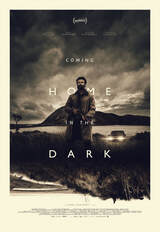
James Ashcroft’s ‘Coming Home in the Dark’ doesn’t exactly slide into menace, as from its opening there is a sense of foreboding. A family of four make their way through the gorgeous New Zealand landscape, Alan (Erik Thomson) and Jill (Miriama McDowell) determined to have a good time while bickering goes on over which of their sons Maika (Billy Paratene) or Jordan (Frankie Paratene) is in the right. One boy spends too much time on his phone, the other complains, blah blah. It’s all good-natured, but the overcast sky and howling wind create an ominous atmosphere. As the family take a hike through the hills, a figure is silhouetted against the sky, watching them. Then two figures, Tubs (Matthias Luafutu) and Mandrake (Daniel Gillies) accost the family, and things get nasty.
Indeed, they get seriously nasty, as Mandrake especially proves to be an utter psychopath. Imagine the type of quirky and soft-spoken figure played by Taika Waititi, especially in ‘Thor: Ragnarok,’ filtered through Matthew McConaughey’s eponymous ‘Killer Joe’. Quiet and polite, even diffident, but capable of utter ruthlessness and a complete lack of empathy. It has been said that evil is the absence of empathy, and if so, Mandrake is the epitome of evil. Tubs’ taciturn presence is also menacing, prompting the audience to consider the role of standing silently alongside terrible acts. No comment and minimal involvement suggest endorsement, a conceit that becomes ever more prominent as the film continues. Early on, we are treated to a truly shocking act of violence, that in many a film might be the culmination. But this is not a film a about shock value – rather about prolonged psychological torture punctuated with moments of bodily horror and injury.
As a road movie, this is truly a long dark night of the soul. Mandrake and Tubs take the family on a long journey through the night, a journey that involves a steady pressing of Alan, also referred to as Hoaggie. Do ‘Hoaggie’ and Mandrake have a history? If so, does Alan genuinely not remember, or is there another reason for him denying knowledge? Recriminations form a major part of the narrative, always hinted at but only rarely explicated. This makes the film all the more unsettling, recalling Ben Wheatley’s masterful ‘Kill List’ as the tension in the car escalates to the point of the viewer just wanting to know what the hell happened?! Alan’s protestations and increasing franticness become as distressing as Mandrake’s gun, a distress emphasised through Jill who pleads and begs, questions and rages, and finally condemns her abductors.
Fundamental to the horror genre is the expression of victimhood. ‘Coming Home in The Dark’ delivers this expression masterfully through the close confines of the car where much of the action takes place, making this a chamber piece on wheels in the style of ‘Locke’ and ‘Collateral’. Cinematographer Matt Henley captures the titular dark in terrible beauty, cloaking faces and alcoves alike, while eyes wide with fear as well as tears catch what little light there is to emphasise the terrifying circumstances. The tightly-wound performances express both menace and terror, the high pitch of the victims’ voices contrasting with the kidnappers’ quiet menace. When the film leaves the car in a couple of intense set pieces, there is a visceral thrill where we will the victims to escape, and the crash of gunshots punctuate an indifferent silence. Yet indifference is something the film challenges, as the film touches on dark issues in New Zealand’s recent history. Alan, Jill and their sons seem to lead a life of blissful ignorance, or is that wilful disregard? Forced to confront uncomfortable truths, as the country as a whole has had to, the respectable middle class (as always) find themselves responsible for harm and suffering. Not that the film necessarily presents Mandrake and Tubs as being reasonable or justified, but it does suggest that if we ignore things, treat ourselves as separate, believe ‘there was nothing I could do’, what we chose to separate ourselves from might come back to haunt us.
Haunting weighs heavily across the film, culminating in a brutal and bleak climax. But even before this point, there is a sense of despair, demonstrated in one character’s choice as well as the apparent resignation of others to their fate. Ashcroft does a commendable job of sticking to his nihilistic guns, resulting in a film that is relentless and punishing, provides little sense of hope or redemption, and leaves a lingering sense of checking our own responsibility for the events that take place around us.
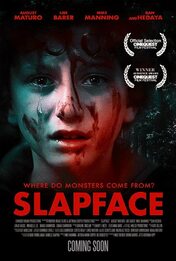
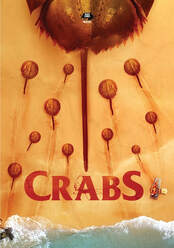
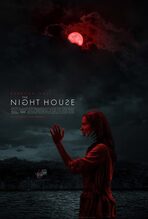
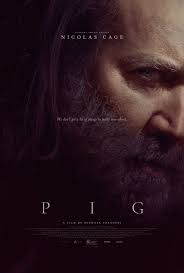

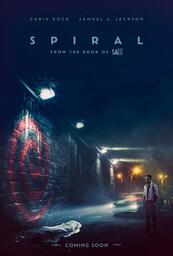
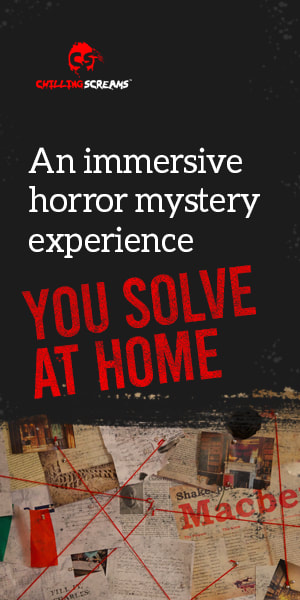
 RSS Feed
RSS Feed
